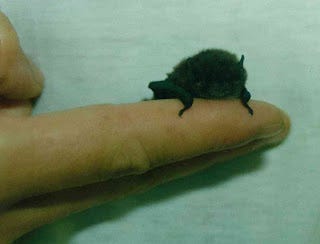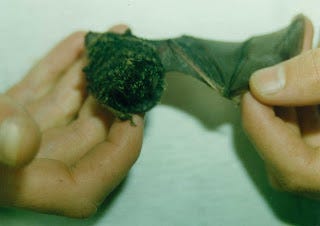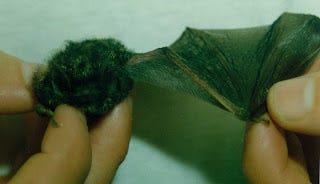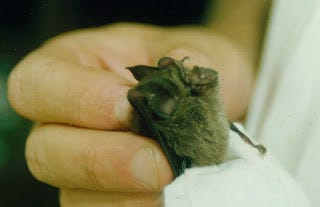The Greater Hurrah Part II
I am back to the time when I was gathering zoological data at Wallaby Creek. Wallaby Creek was once one of Australia's richest mammal communities, and so the reason my colleague was conducting a mammal survey there was to investigate how the fauna had changed with the expansion of various land-uses.
Another of the greater hurrahs that we were privileged to see at Wallaby Creek was the golden-tipped bat. To our astonishment, one day we actually found one just hanging on the wall inside the hut. Unfortunately this meant that it was disoriented and sick and not long for this world, but we were able to have a very good look at it.
Australia's little insectivorous bats are creatures worth knowing about. Dispel from you mind the vision of large, noisy fruit bats squabbling in fruit trees, hanging from power lines and waking you in the night dropping mangoes on your roof. The insectivorous bats will rarely be seen, and the sounds they make are undetectable to the human ear (but go out into the forest at night with the appropriate high-frequency sound equipment and it's amazing what you will hear, the night full of echoes, or set a harp trap in a flight corridor and you will catch wonders to behold).

Some of these bats weigh less than 5 grams, and they sit in your hand so tiny and weightless, so soft and warm and quivering. I could have developed a passion for these bats, but that would have been traitorous because a zoologist always sticks to their kind, and I was a kangaroo girl.

Note the golden tips on its fur.

And there is a sweet little face in there somewhere.

This is the eastern horseshoe-bat. How is that for a nose?!

